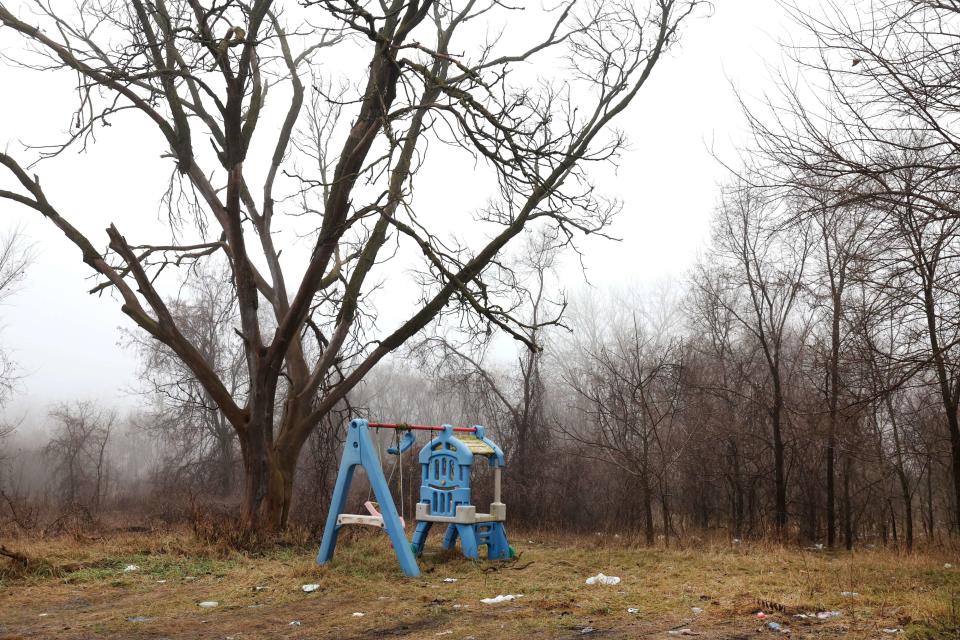Southeast Side residents push back on proposal to allow mining in Chicago to make way for underground complex
Environmentalists and community activists are blasting a proposed ordinance that would allow mining in Chicago and open the doors to a controversial project on the heavily polluted Southeast Side.
“I want people to think about this,” Oscar Sanchez of the Southeast Environmental Task Force said in a Zoom news conference Thursday.
“If a mine was proposed in Lincoln Park, or in the South Loop, that would be shut down immediately,” he said. “There would be no question people would see that as absurd. Yet here we are, facing the same proposal in our community.”
Speakers at the news conference were particularly concerned about the Invert, a proposed two-story underground commercial real estate complex with 6 million square feet of leasable space. The project would be located on the Southeast Side, near George Washington High School.
The project website says the Invert would be “the biggest job creator on the far South Side in decades,” leading to over 3,000 permanent new jobs in the region.
There would be a new park, a community center, EV charging, a community solar field and ecological restoration.
But opponents point to the lead investor: Ozinga Ventures, an independent investment group established by the Ozinga family, owners of a construction materials business based in Mokena. Limestone, which would be removed to create the Invert’s underground complex, is a key ingredient in cement and concrete.
The Invert, which did not respond to requests for comment, denied that mining is the goal in an FAQ on the project website, saying that the economics don’t pencil out.
“Our interest is in the uniqueness, size and location of the subsurface commercial real estate complex we are creating, not the material,” the website says. “The value of the material being removed to create the space is not worth the expense of subsurface construction.”
Ozinga Ventures, Ozinga and the Invert could not be reached for comment.
In April, Chicago Zoning Administrator Patrick Murphey issued an opinion that the Invert, which would entail excavating and removing limestone, met the definition of a mining project. That was a blow to the Invert, as mining isn’t allowed in the city.
But then on Wednesday, Ald. Peter Chico, of the 10th Ward on the Southeast Side, proposed an ordinance that would allow mining in areas of the city zoned for the heaviest industrial activity. Mining projects would be subject to an extensive review process.
That proposal was the topic of Thursday’s news conference, where speakers said the Southeast Side would be the first in line for mining, should the ordinance be approved.
“We should not have mining next to our homes, our schools, our parks and our grocery stores,” said Amalia NietoGomez, executive director of the Alliance of the Southeast.
“We know this (ordinance) is to allow Invert to do a mining operation in our community, on toxic land. And that is unacceptable. We don’t want to breathe in toxic dust or have mines affect the foundations of our homes,” she said.
Chico’s office did not respond to requests for comment.
The Southeast Side, once one of the world’s largest steel producers, has long shouldered more than its fair share of industrial pollution and contamination.
In 2021, community activists went on a hunger strike to protest the proposed construction of a scrap metal shredder on the Southeast Side. The shredder, a project of Ohio-based Reserve Management Group, would have replaced a similar operation known as General Iron, which was located in a wealthy, largely white North Side neighborhood, where residents had complained for years about explosions, metallic odors and bits of scrap metal drifting into Lincoln Park.
RMG closed General Iron after reaching an agreement with the city in 2019 to build a new metal recycling facility on the Southeast Side.
Last year the city of Chicago reached a historic agreement with the U.S. Department of Housing and Urban Development after South Side activists initiated a federal civil rights investigation into local laws that allowed polluters to be concentrated in certain communities.
The city’s three-year agreement with the federal government, which is binding, includes reforms in City Hall planning, zoning and land-use practices.
Construction of the recycling facility is still the subject of litigation.
Cheryl Johnson, the executive director of People for Community Recovery, told the audience at Thursday’s news conference that she was speaking on the birthday of her late mother, Hazel, a leading figure in Chicago’s environmental justice movement.
Johnson said the Southeast Side was facing “another classic example of environmental racism in the city of Chicago.”
Speakers said they were hoping for the speedy introduction of a Cumulative Impact Ordinance aimed at protecting neighborhoods facing long-term environmental burdens. The city is drafting an ordinance with input from community representatives and environmental groups.
“Chicago’s Southeast Side is not a sacrifice zone,” Sanchez said. “It’s a community of dreams, aspirations and the right to a safe and healthy community. It’s time for Chicago’s children and families to have health protections, and this mining operation is moving us in the opposite direction.”
nschoenberg@chicagotribune.com
Editor’s note: In earlier versions of this story, it was unclear why RMG closed the scrap metal shredder on the North Side. RMG closed General Iron after reaching an agreement with the city in 2019 to build a new metal recycling facility on the Southeast Side.



